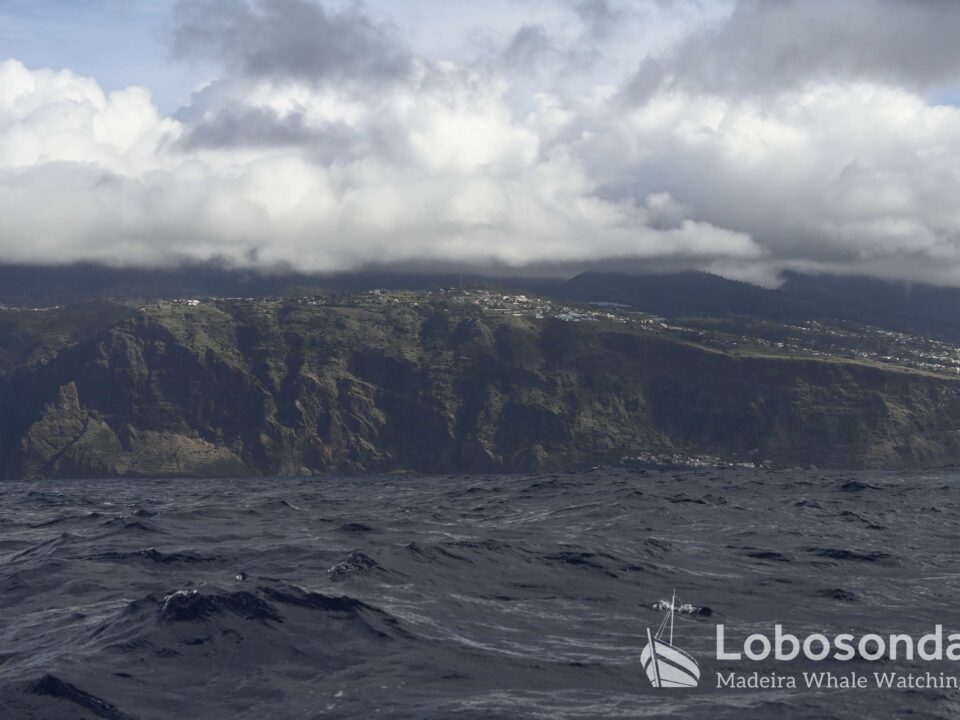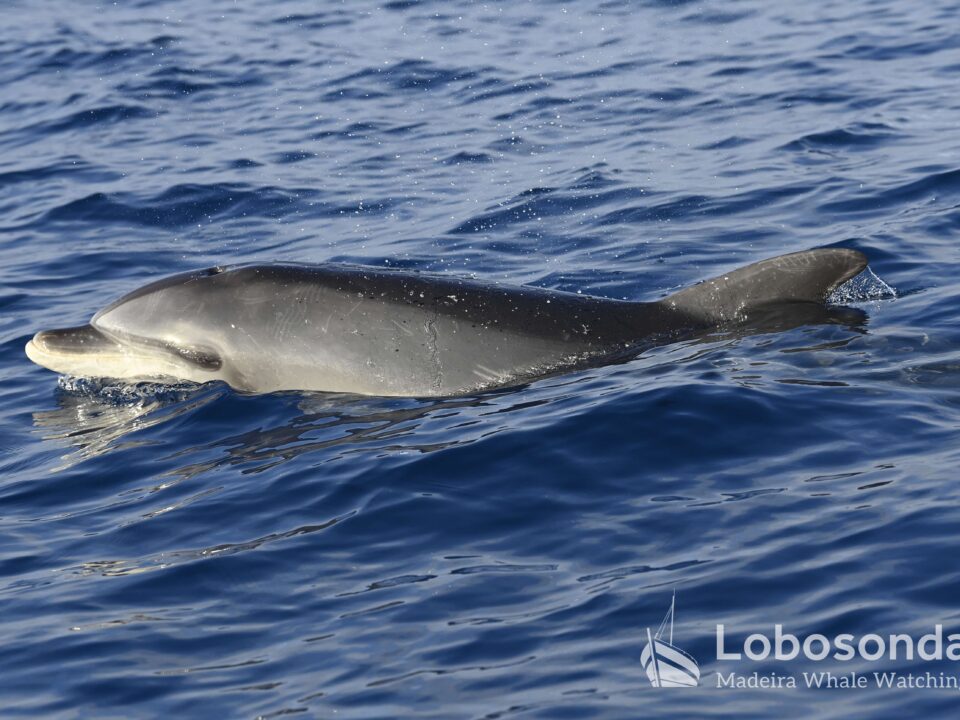
01.04.2022 – Whales, whales, whales aaaaand dolphins
April 8, 2022
06.04.2022 – “Blondi”
April 12, 2022It’s always incredible how the Atlantic Ocean surprises us with brilliant sightings! We never really know when we are going to encounter baleen whales at sea but what we do know is that April and May are the months where you are most likely to see some of the oceans giants. After meeting a rather evasive pod of Striped dolphins (Stenella coeruleoalba) racing through the windy waters, our spotter Carlos informed us of a possible baleen whale sighting just one mile further out. We were hopeful but also ready for a disappointment. The windy and wavy conditions usually makes it very hard to track down these enormous yet timid ocean dwellers and the fact that they usually turn up alone wasn’t going to make things any easier.
Little did we know that we were in for the ultimate sighting. Carlos soon informed our team that there were in fact three whales and he assumed they were big, judging by the size of their spout. We were im mediately able to identify the two Fin whales (Balaenoptera physalus) by the white flash along their right cheeks but the third whale that was leading the party had the characteristic grey-blue colour and small dorsal fin that was typical for their enormous cousins, the Blue whales (Balenoptera m. musclulus). I couldn’t believe it; this was my first encounter with a blue whale and the first sighting of the species by our company in five years! How lucky we all felt!
Blue whales passing Madeira usually do so as a quick pitstop on their journeys through the Atlantic Ocean. They are usually encountered in spring as they migrate to their summer feeding grounds in the polar waters, with April and May being the best months for sightings on both Portuguese archipelagos. Blue whales and Fin whales have the deepest and loudest voices in the animal kingdom and use these low frequencies to communicate with conspecifics that may be several kilometres away. Sadly, this has become increasingly difficult due to the large levels or noise pollution in our ocean due to large ship traffic, oil drills, sonar devices and seismic tests. The only good thing about noise pollution is once you stop making noise, it goes away. If we reduce noise pollution then perhaps we’ll have the donor of welcoming more of these magnificent giants in our waters in future!
By Paula Thake
Sightings of the day
Stenella
10:00 Blue whale, Fin whales, Striped dolphins






















